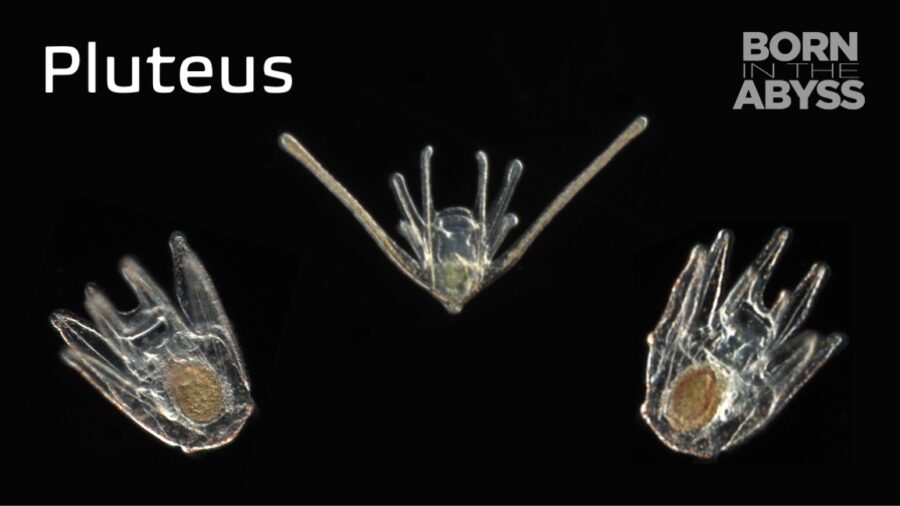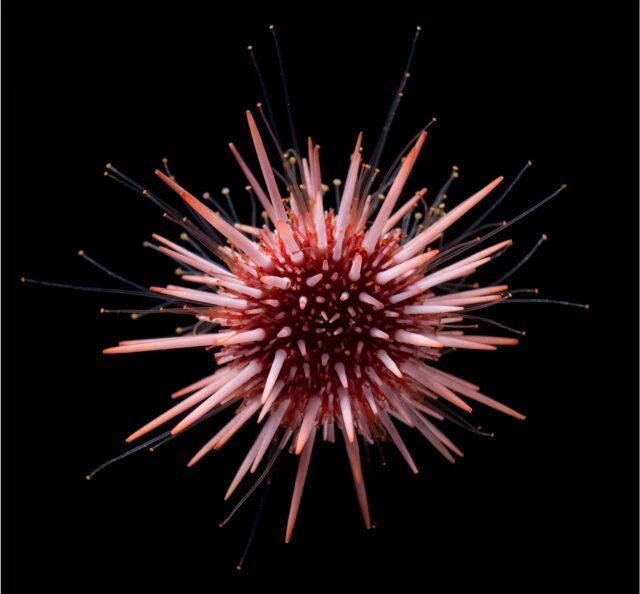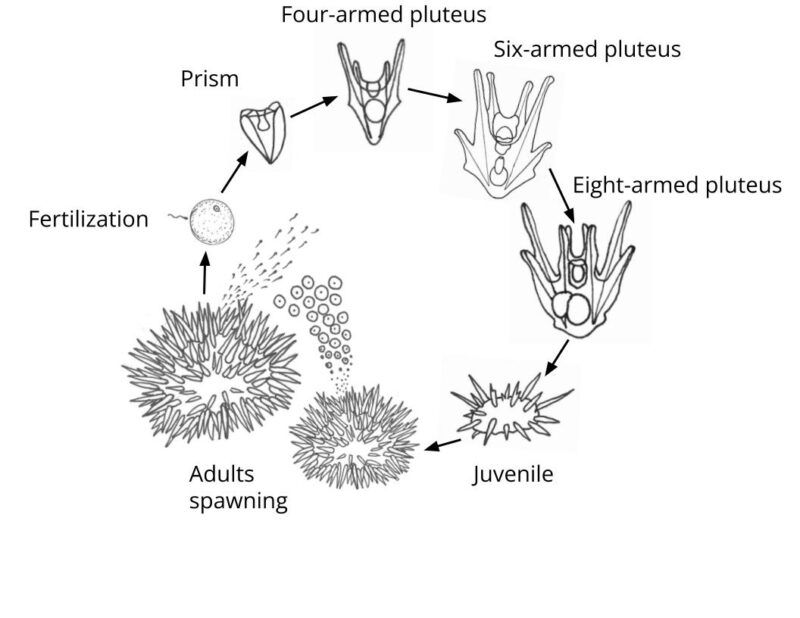
Pluteus
Plural: Plutei
From the Latin word "pluteo," which means "shelf," referring to the easel-like appearance
Parents: Sea urchins, sand dollars, and brittle stars
Food: Microscopic algae called phytoplankton
Size: About 800 microns tall = 0.8 millimeters = 0.03 inches

Photo of an adult red urchin by Reyn Yoshioka
Larval Form and Function
Watch this compilation video to learn more about the movement, anatomy, and feeding of the pluteus larva.
Life Cycle of a Sea Urchin

Drawn by Nadia Stoker
- The pluteus larval form is found in sea urchins, sand dollars, and brittle stars.
- Adults of most species with a pluteus larval form have separate male and female individuals.
- Eggs and sperm are typically spawned into the seawater, where fertilization takes place (external fertilization) and results in many plutei.
- A pluteus larva generally exists for weeks to months and feeds on phytoplankton (microscopic algae). Adult brittle stars live for about five to 30 years, but sea urchins can live longer than 100 years. These adults feed on a variety of foods, depending on the species.
- In sea urchins and sand dollars, the internal skeletal rods visible in the pluteus larval arms become the first spines of the juvenile.
Larval Quest Activity
Developed by Nadia Stoker and Caitlin Plowman as outreach and education materials accompanying the Born in the Abyss film.
The Stephen Low Company
Oregon Institute of Marine Biology, University of Oregon
National Science Foundation

